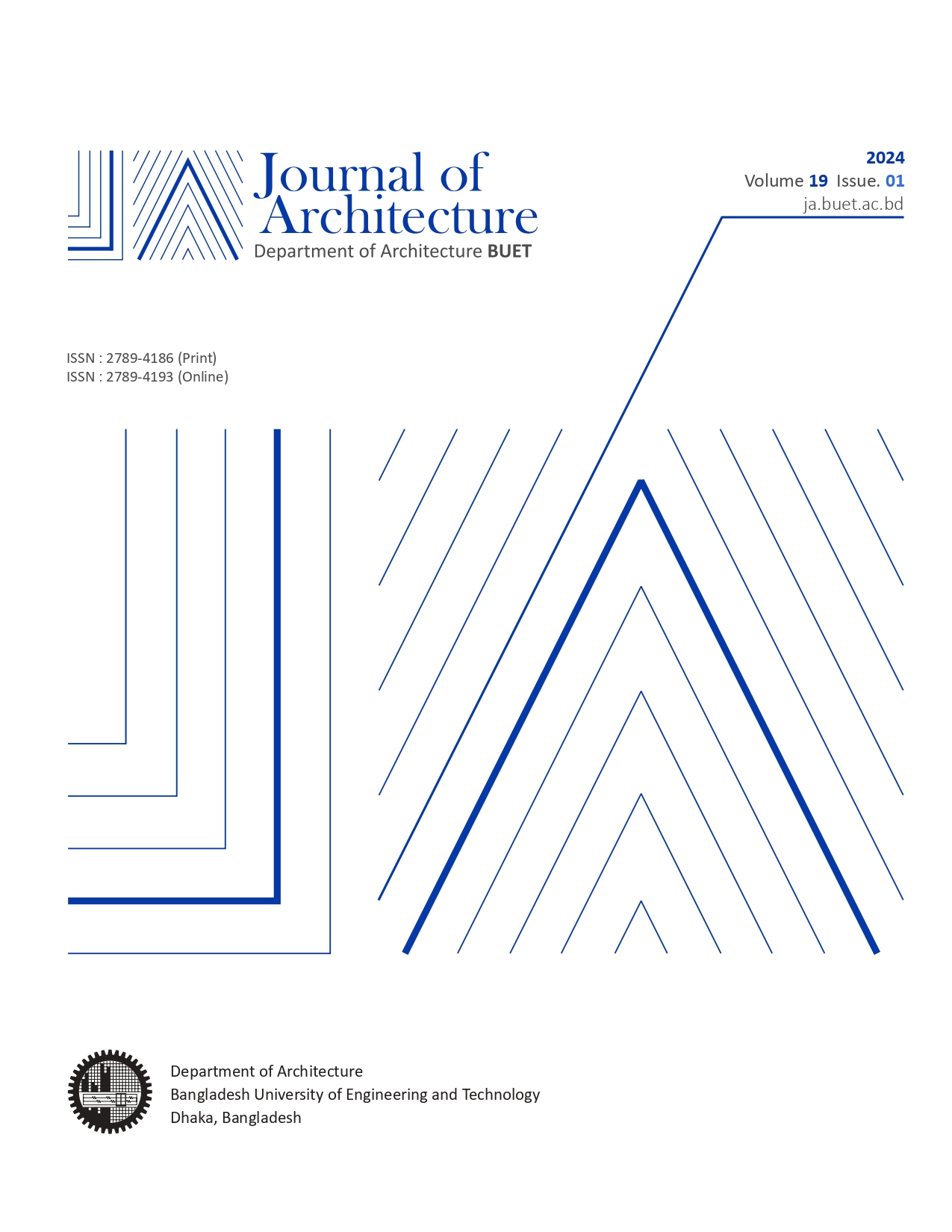Exploring accessibility to the green network of Dhaka city: A syntactic approach
Authors:
- Maher Niger1
- Farida Nilufar
Keywords:
- Green Network,
- Accessibility,
- Integration,
- Choice,
- Angular Segment Analysis,
Abstract
To meet the recreational and social needs of Dhaka’s expanding population, it is essential to increase public open and green spaces while preserving ecological corridors and minimizing ecological footprints. Rapid, unplanned urbanization has significantly reduced green spaces in Dhaka. In response, Dhaka’s Draft Structure Plan (2016-2035) proposes creating a green network of interconnected open and green spaces to enhance livability by supporting public functions, recreational activities, and social interactions. Developing this green network requires understanding how public green spaces are interconnected and integrated into the urban fabric to provide pedestrian access. This involves describing the spatial integration of green spaces within the urban fabric and how their linkage to pedestrian networks enhances accessibility and utilization. Therefore, a question that can be posed is how the accessibility of green networks can be adequately defined to become a practical criterion in both research and practice. This study posits that configurational measurements of space syntax provide an appropriate theoretical framework and analytical tools for assessing green network accessibility. The research applies integration and choice measures of angular segment analysis at the city and local levels, comparing the results with pedestrian movement patterns. Initially, the study aims to assess the integration of green spaces within the urban spatial structure. Additionally, choice analysis is conducted at various radii (global, pedestrian, and mass transit) to understand the accessibility and connectivity potential of each selected space. Finally, pedestrian movement is analyzed by correlating configurational variables with the distribution of selected spaces, highlighting their integration within the larger urban system and their relationship with adjacent pedestrian networks. The study concludes that each sample space is wellconnected to Dhaka’s global integration core and is surrounded by highly integrated lines, indicating the potential to develop a public realm with interconnected green spaces in the city’s core. The findings will motivate new approaches to urban design accessibility challenges that might increase open space efficiency in Dhaka and other similar environments.
DOI
DOI not availableReferences
Other Information
Journal Information
For Authors
For Reviewer

DEPARTMENT OF ARCHITECTURE
BANGLADESH UNIVERSITY OF ENGINEERING AND TECHNOLOGY
ISSN NO. 2789-4185 (Print)
ISSN NO. 2789-4193 (Online)

